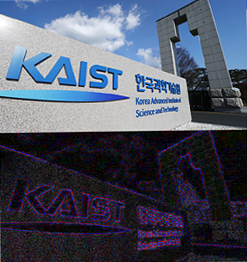Professor Heung-Kyu Lee and his team from the School of Computing have developed a new algorithm for inserting and detecting digital watermarks in videos using an artificial neural network. Digital watermarking is the method of inserting a “marker” into digital content. The marker acts as a unique identification and is widely used to identify ownership of digital multimedia content. The technique is commonly used for a variety of reasons: copyright protection, video authentication, broadcast monitoring, etc. Due to the increasing availability of watermark detection and removal softwares, it is important that the digital watermarking algorithm is robust enough to withstand attacks from third parties.
Current digital watermarking methods are designed according to a set of fixed parameters such as typical watermark attack approach. As a result, they do not account for all scenarios and remain limited in applicability. Professor Lee’s team’s approach, however, can adapt to new forms of attacks by training its artificial neural network. Additionally, it offers a perspective-independent robust DIBR (Depth-image-based Rendering) 3D video watermarking method and an eye-fatigue-minimizing S3D (Stereoscopic 3D) video watermarking method.

The research team has developed and released a web service at http://watermark.kaist.ac.kr based on its research so far. Users can now upload 2D or 3D videos on to the platform and insert watermarks; after a watermark has been inserted, they can also extract the watermark to settle and resolve possible media ownership conflicts. The website also provides tools that allow users to simulate compression-based watermark attacks, control watermark strength, and compare video quality before and after the watermark insertion.
Professor Lee said, “Video-related conflicts are no longer limited to copyright issues, but are now expanding to problems related to pirated video detection, authentication, validity checking, and tracking. The interest in this field is increasing rapidly. Using artificial intelligence-based techniques to tackle the limitations of current watermarking techniques, I would like to lead digital watermarking research.”

